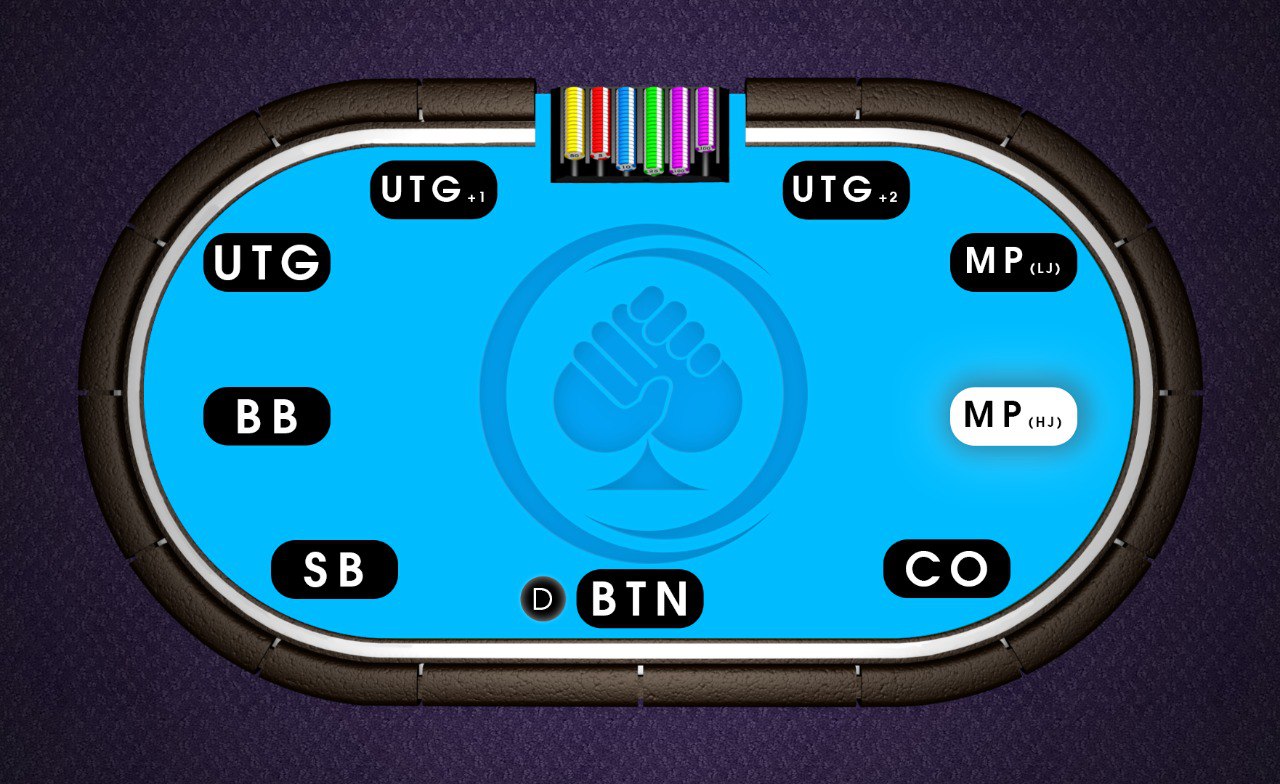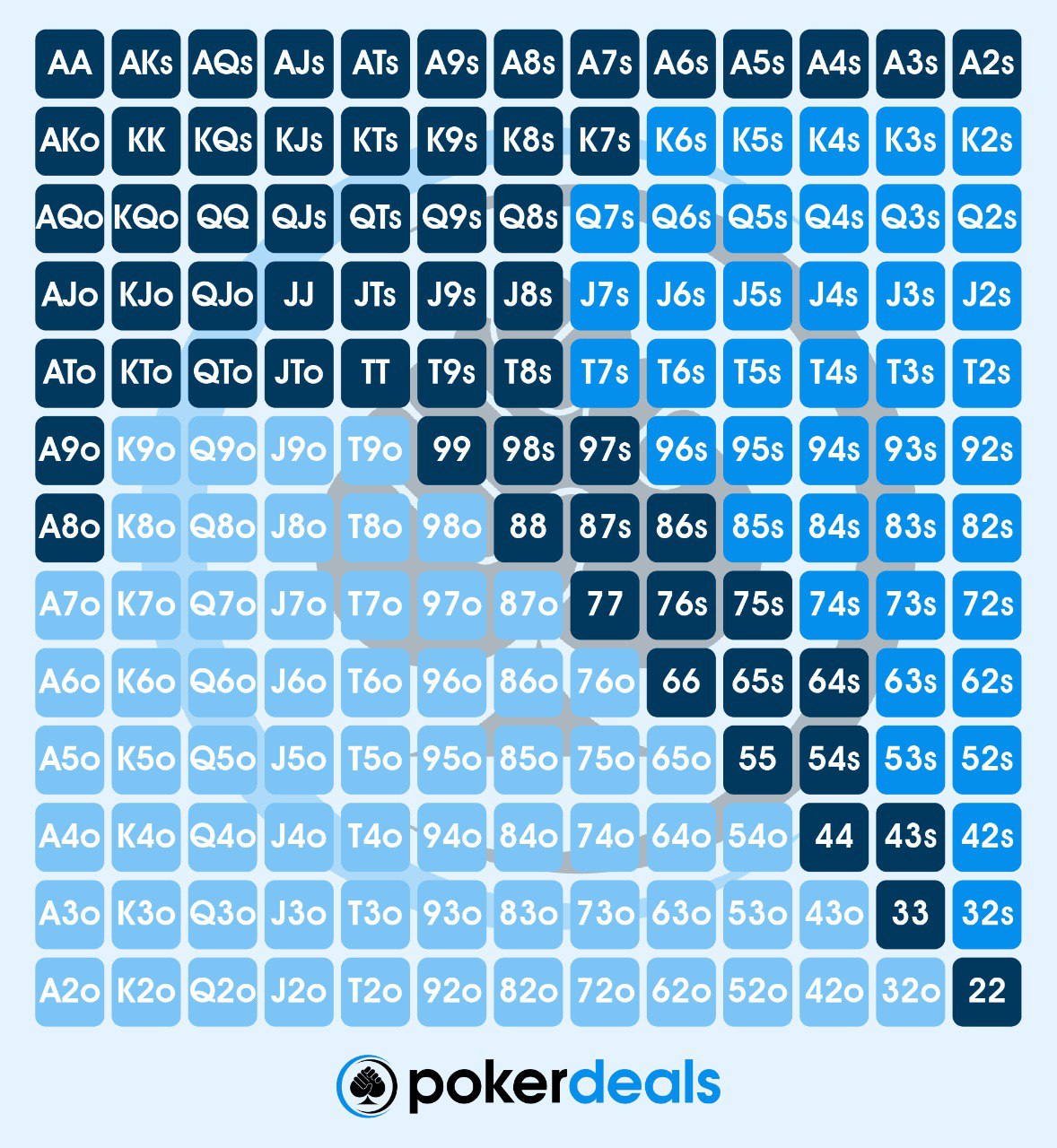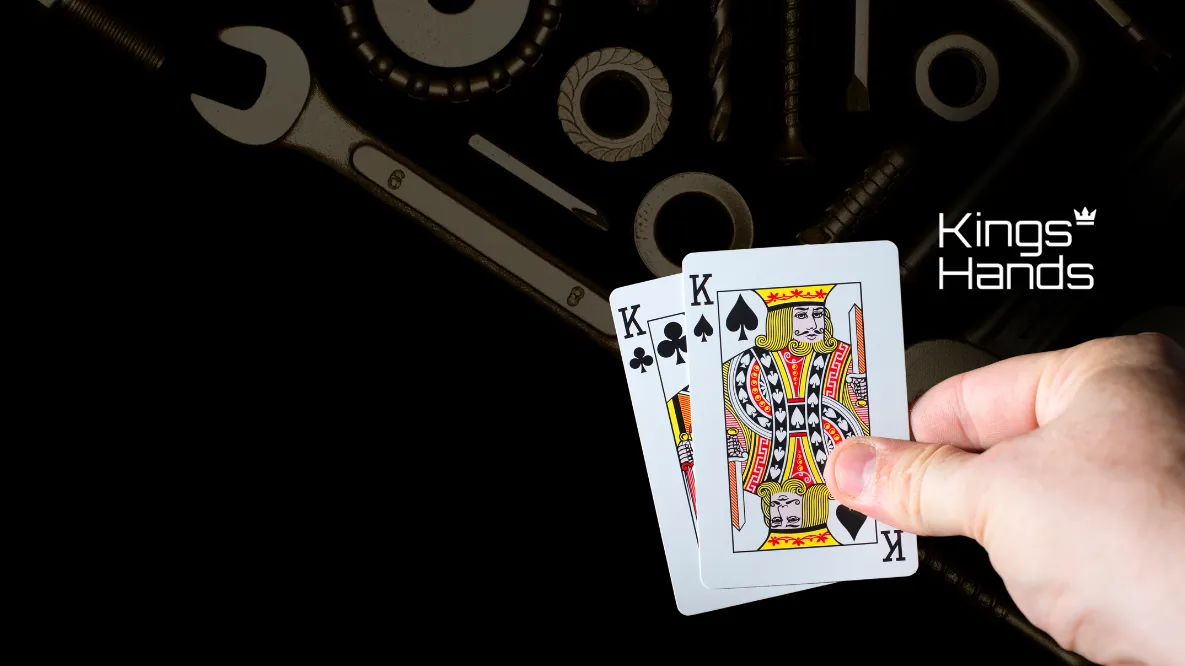We’ve arrived at the HiJack position – the middle of the table in a nine-handed game. We’re moving closer and closer to the button, so that means we can have some fun and start opening a wider range of hands!
But, while we don’t have to be as worried about our opponents waking up with a monster, we have a brand new concern to worry about – postflop range management. We’ll dive into that and much more when we take a look at how to construct your HJ opening range.
What is the HiJack Position?
The HiJack position is the position to the left of the LoJack position and to the right of the Cutoff position. At a nine-handed table, the HiJack is the fifth position to act preflop. It is often called the “HiJack” position as we’re “hijacking” the Cutoff’s ability to steal the blinds.

How Should You Play From the HiJack?
Now that we’re in the middle of the table and not confined to early position, we can start to expand our range in an attempt to steal the blinds. We only have four players left to act after us, and we’re equally likely to be in position postflop as we are to be out of position postflop. As there are only four players left to act after us, we’re not as concerned about someone waking up with a big hand behind us, as there are fewer opportunities for that to happen.
Given that we’re free of the disadvantages we faced in early position, we can really start to expand our preflop raising range. As the name implies, we’re “hijacking” the Cutoff’s ability to steal the blinds, and the lack of disadvantages means we can really open up our raising range compared to earlier positions.
However, we need to be mindful of how we’re going to be playing our range postflop. While we’re not as concerned about our opponents having a strong hand, playing a very wide range postflop is hard to do, especially when you’re out of position. So, while we can open up our range when playing from the HJ, we can’t afford to go as wide as we would from the BTN or CO.
How Do We Construct a HiJack Opening Range?
So, now that we know we’re going to be expanding on our LJ opening range, what hands are going to be filling in the gaps? Well, like when we looked at constructing our LJ opening range, there aren’t many obvious gaps to be filled, so many of the hands you choose will be down to personal preference.
One area of the hand matrix that can be filled is the offsuit broadway hands, as many players choose to raise every single offsuit broadway hand from the HJ. However, we wouldn’t recommend adding many more offsuit hands into your range, as offsuit hands are much harder to play postflop, as they don’t flop as much equity as suited hands. Plus, it’s important to remember that there are three times as many offsuit combos of a hand as there are suited combos, so you don’t need to add many to your range to increase the overall number of hands that you’re raising.
Where we can really start having some fun is on the suited side of the board, as many players raise almost every suited connector and a lot of suited gappers, as well as bigger suited hands like K8s, K7s, Q8s, and J8s. Hands like this have good postflop playability, and when we’re in a position where being able to manage our postflop range is more important than raising a strong preflop range to protect against our opponents, these are the hands we want to include.
Exactly which hands you include from the suited side of the board is totally up to you, and will depend on the types of hands you prefer playing. For example, if you don’t like the idea of getting overflushed when playing suited connectors, you can decide to add more Kx, Qx, and Jx-suited hands into your range. However, this comes with the caveat that you will be less protected on low boards.
There is always a give and take when constructing a preflop range, so make sure you include the hands that you feel most comfortable playing postflop.
HiJack Base Opening Range
At a nine-handed cash game table with 100bb, we recommend that your baseline Hijack range should look something like this:
27.90% – 22+, A2s+, K7s+, Q8s+, J8s+, T8s+, 97s+, 86s+, 75s+, 64s+, 54s, 43s, A8o+, KTo+, QTo+, JTo

Comparing the images of the HJ opening range to the LJ opening range, you can see a significant difference in the number of unique hands we’re playing from this position. Now that we’re in the middle of the table and are moving ever closer to the button, we can afford to significantly increase the number of hands we’re playing.
You’ll see that many of the hands have come from the suited side of the board and that we don’t play many of the offsuit hands outside of the broadway hands and Ax hands. This is because our main concern from this position is postflop playability. We don’t need to worry as much about our opponent having a strong hand, but we do need to play a range that is easy to manage postflop.
If we include too many offsuit hands, our range becomes far too bloated and becomes difficult to balance postflop, especially when we play out of position. If we include all the offsuit connectors like T9o, 98o, etc., our range will often be more weighted towards air hands, so we either have to give up and check/fold more often, or start overbluffing – neither of which are appealing.
That’s why we’ve limited the number of offsuit hands, and included a number of suited hands that give us a good amount of board coverage. As there are far fewer combos of suited hands, our range isn’t as bloated, and becomes easier to manage postflop, making it easier to play both in and out of position.
Adjusting Your Range
As we move around the table and have fewer people left to act behind us, the adjustments we can make when playing on a tight or loose table can be more pronounced, as we don’t have to be as concerned about running into a big hand.
However, when making your adjustments, it’s important that you understand how your adjustments change the construction of your range, and how you should play that range postflop.
How You Should Adjust at a Tight Table?
If your opponents are playing too tight and overfolding to raises, you can afford to start raising much wider from the HiJack to steal the blinds. Stealing the blinds more often than you should will significantly boost your win rate in the long run, so make sure you’re taking every opportunity that comes your way.
When widening our range to take advantage of a tight table, we’re less worried about having playable hands postflop, as the reason we’re raising is that we don’t think we will see the flop as often as we should. Instead, you need to be raising hands that block the strongest hands that your opponent will have, as this reduces the likelihood even further that they will defend against your raise.
This means you want to be opening a lot more Kx, Qx, and Jx-suited hands, as well as more of the Ax offsuit hands. By holding these big cards in your hand, it makes it less likely our opponent will have a hand that they can continue with, which means that your preflop raise will work more often.
How You Should Adjust at a Loose Table?
If you’re playing at a table that calls too often, postflop playability matters a lot more, so we want to remove the hands that play poorly postflop and focus our range on the hands that frequently make strong, showdownable hands. We recommend that you remove the weakest hands from your range, and exploit your opponents by playing hands that will dominate their wide range.
One thing you’ll find at a loose table is that hands will often go multi-way to the flop, so you need to make sure that your range has a number of hands that will play well in a multi-way scenario.
Hands like AK and AQ play well, as they make very strong top-pair hands that you can use to value bet with. Hands like 76s and 87s play well multi-way, as they can make strong straight and flush draws, as well as good two pair+ hands. However, hands like A8o and A9o don’t make very strong top pairs, or strong draws, and are much harder to play multi-way.
Summary
The HiJack position can be a tricky position to play, as it’s hard to strike the right balance between too tight and too loose. Too tight, and we’re not using our position to steal the blinds often enough; too loose, and we find ourselves having to manage a wide range in tricky postflop situations.
However, by opening a range of strong offsuit hands and a number of lower-value suited hands that play well postflop, we’re able to achieve that balance and make the most of the HiJack position.
Stay tuned for our next article on preflop opening ranges, where we’ll be covering the Cutoff position, by following us on Facebook and Instagram.





















